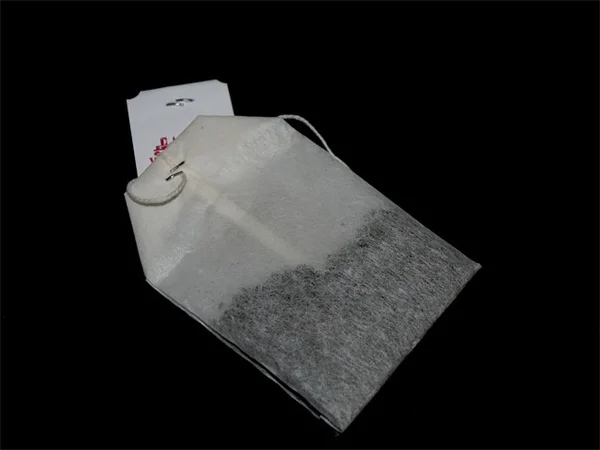Advertisement
How is the CDC tracking bird flu in wastewater? The answer is: The CDC has launched a national wastewater surveillance system that's detecting unusual flu virus levels across 600+ U.S. sites. Right now, they're seeing above-average readings in 10 areas - mostly in Texas and California - with one Kansas county showing high levels. While H5N1 has infected millions of birds and recently jumped to cattle in nine states, the good news is human risk remains extremely low (just two U.S. cases ever). I'll walk you through exactly how this early warning system works and what those wastewater spikes really mean for your safety.
E.g. :Statins Help Older Kidney Disease Patients Live Longer: New Study
- 1、Tracking Bird Flu: What You Need to Know Right Now
- 2、Understanding the Real Risk to Humans
- 3、Hotspots and Warning Signs
- 4、What This Means for You
- 5、Looking Ahead
- 6、Beyond the Basics: What Else You Should Know About Bird Flu
- 7、The Science Behind the Scenes
- 8、Economic Impacts You Might Not Expect
- 9、Wildlife Conservation Concerns
- 10、Everyday Precautions That Actually Help
- 11、Looking Beyond the Headlines
- 12、FAQs
Tracking Bird Flu: What You Need to Know Right Now
The CDC's New Tool for Monitoring H5N1
Guess what? The CDC just rolled out a brand-new wastewater tracking system to keep tabs on bird flu across the country. Think of it like a neighborhood watch program, but for viruses! Right now, they're seeing higher than normal flu virus levels in 10 areas - mostly in Texas and California.
Here's something interesting: while this virus has been wreaking havoc in the bird world (we're talking 90 million birds since 2022), it's barely touched humans. Only two cases in the U.S. so far - one in 2022 and another dairy worker this April. That's like finding two specific grains of sand on Miami Beach!
Why Cattle Matter in This Outbreak
You might wonder - why are we suddenly talking about cows? Well, H5N1 recently made the jump to cattle in nine states. Here's the kicker: infected cows don't always show serious symptoms, which means they can spread it without us knowing. It's like that one coworker who comes to work sick and gets everyone else ill!
| State | Infected Herds |
|---|---|
| Michigan | 14 |
| Texas | 13 |
| New Mexico | 8 |
The Texas situation is particularly interesting. Researchers found H5N1 in wastewater from nine cities between March and April. But here's the million dollar question: Is this coming from birds, cows, or something else? The wastewater data can't tell us that yet - it's like getting a weather alert but not knowing if it's for rain, snow, or hail!
Understanding the Real Risk to Humans
 Photos provided by pixabay
Photos provided by pixabay
Let's Talk Numbers and Facts
While H5N1 sounds scary (and it can be deadly), the current risk to people remains low. Out of about 1,000 human cases worldwide since the 1990s, half were fatal. But here's the good news: we've only seen two cases in the U.S., and zero cases of human-to-human transmission.
Dr. Pyrć, a virology expert from Poland, puts it this way: "The virus doesn't thrive in human bodies right now." It's like trying to grow a cactus in Alaska - possible, but not ideal conditions!
How Wastewater Monitoring Works
Imagine your city's sewer system as a giant health check-up. The CDC's National Wastewater Surveillance System checks samples from over 600 sites nationwide. When they see unusual flu virus levels compared to last year, it raises a red flag for possible H5N1 activity.
Here's something that might surprise you: Most wastewater tests can't distinguish H5N1 from other flu types. They're looking for unusual spikes that suggest something different is happening. It's like noticing your dog is barking more than usual - you don't know why yet, but you know something's up!
Hotspots and Warning Signs
Current Areas of Concern
As of early May, these locations showed above-average flu virus levels:
- Several Texas counties (Randall/Potter, Montgomery, Webb)
- Multiple California counties (Sonoma, Marin, San Francisco/San Mateo, Placer, Santa Clara)
- Pinellas County, FL and Oswego County, NY
Saline County, Kansas had the only "high" reading. But remember - this could be from birds, cows, or other sources. The CDC is watching these areas like a hawk (no bird flu pun intended)!
 Photos provided by pixabay
Photos provided by pixabay
Let's Talk Numbers and Facts
Texas researchers describe wastewater monitoring as an "early sentinel signal." When they spot trouble, they alert health departments to ramp up surveillance. Think of it as a smoke detector for viruses - it can't put out the fire, but it gives us crucial early warning!
The TexWEB network has been especially helpful, using genetic analysis to track thousands of viruses in single samples. Since March, they've been consistently finding H5N1 in multiple sites. It's like suddenly seeing your ex's name pop up everywhere - you notice the pattern!
What This Means for You
Should You Be Worried?
Short answer: No need to panic, but stay informed. The Texas researchers assure us pasteurized milk is safe, and there's no human-to-human spread. However, they're watching for any mutations that could change the game.
Dr. Pyrć puts it bluntly: "Could H5N1 cause a pandemic? Yes. Is it happening now? No." It's like knowing hurricanes are possible where you live - you prepare, but don't board up your windows in January!
How Authorities Are Responding
The CDC is on top of this with multiple monitoring systems. Wastewater data is just one piece of the puzzle. They're also tracking animal outbreaks, human cases, and virus genetics.
Here's the real challenge: Getting countries worldwide to cooperate on prevention without political interference. As Dr. Pyrć asks: "Are governments ready to let health agencies do their jobs?" That's the billion-dollar question!
Looking Ahead
 Photos provided by pixabay
Photos provided by pixabay
Let's Talk Numbers and Facts
Scientists are particularly concerned about three things:
- More jumps between species (like the recent cattle infections)
- Any signs of human-to-human transmission
- Genetic changes that might make the virus more dangerous
The good news? We've got better tools than ever to spot these changes early. It's like having a high-tech security system instead of just a guard dog!
Your Action Items
Here's what you can do:
- Stay updated with CDC announcements
- Avoid contact with sick or dead birds
- Cook poultry thoroughly (always good advice!)
- Don't panic about dairy - pasteurization kills the virus
Remember, while H5N1 is serious in animals, the human risk remains low. We're in much better shape than during COVID's early days, with surveillance systems already in place. As my grandma used to say: "An ounce of prevention is worth a pound of cure" - and in this case, we've got tons of prevention!
Beyond the Basics: What Else You Should Know About Bird Flu
The Global Picture of H5N1 Spread
While we're focusing on U.S. cases, did you know this virus has been traveling the world like a backpacker on gap year? Since 2021, H5N1 has popped up in 80 countries across five continents. Europe's been particularly hard hit, with some poultry farms losing entire flocks overnight.
Here's a wild fact: Antarctic researchers recently found H5N1 in skuas (those pirate-like seabirds) near research stations. Now we've got to worry about penguins getting sick too! It's like watching a nature documentary where the villain virus keeps finding new victims.
How Climate Change Plays Into This
You wouldn't think weather and bird flu are connected, but hear me out. Warmer temperatures are changing migration patterns, causing different bird species to mix who normally wouldn't meet. It's like throwing a party where guests from completely different social circles start swapping germs.
Scientists are tracking how these unusual bird interactions create more opportunities for virus mutations. Remember that Texas dairy worker case? That strain had some unique genetic changes we hadn't seen before. Makes you wonder - what other surprises might this virus have up its sleeve?
The Science Behind the Scenes
Vaccine Development Status
Good news - we're not starting from scratch like we did with COVID! The U.S. already has H5N1 vaccine candidates in the national stockpile. These were developed after the early 2000s outbreaks. They might not be perfect matches for current strains, but they give us a huge head start.
Here's something cool: Moderna's working on an mRNA bird flu vaccine (sound familiar?). They claim they could adapt it to new strains within 60 days if needed. That's faster than most of us can finish a Netflix series!
Testing Capabilities Across the Country
Wondering how fast we could detect human spread? Most state labs can now test for H5N1 specifically, not just general flu. The CDC's shipped out 750,000 test kits since March to beef up surveillance.
| Testing Method | Turnaround Time | Specificity |
|---|---|---|
| Rapid Flu Test | 15 minutes | Can't distinguish H5N1 |
| PCR Test | 4-6 hours | Identifies H5N1 specifically |
| Whole Genome Sequencing | 3-5 days | Shows exact genetic makeup |
But here's the catch - unless you're a farm worker or have clear exposure risks, your doctor probably won't order H5N1 testing yet. It's like having a fancy metal detector when you're not even at the beach!
Economic Impacts You Might Not Expect
Egg Prices and Breakfast Consequences
Remember when egg prices went nuts last year? That was H5N1's doing! We lost about 40 million egg-laying hens to the virus or preventive culling. Suddenly your Sunday brunch omelet became a luxury item.
And get this - some bakeries had to reformulate recipes because egg alternatives don't behave the same way in baking. Your favorite cookies might have tasted different last year, and you can blame bird flu for that!
The Dairy Industry's New Normal
Cows getting sick creates this weird domino effect. Milk production drops about 10-20% in infected herds, which doesn't sound like much until you realize one Texas dairy farm ships 400,000 gallons daily. Now multiply that across nine states!
But here's a silver lining - pasteurization kills the virus, so your cereal milk is safe. Though I did hear about one guy who started asking for "H5N1 test results" with his latte order. Baristas weren't amused!
Wildlife Conservation Concerns
Endangered Species at Risk
This isn't just about chickens and cows - H5N1 is hammering wild birds too. Over 6,000 wild birds tested positive in the U.S. last year alone. Conservationists are especially worried about California condors; we nearly lost some to the virus.
Imagine working decades to bring a species back from the brink, only to have a virus undo all that progress. It's like finally paying off your student loans, then getting hit with unexpected medical bills!
Zoos on High Alert
Next time you visit the zoo, you might notice some exhibits closed. Many zoos have moved sensitive birds indoors or set up "airlock" entry systems for staff. The National Zoo in D.C. even vaccinated their flamingos - talk about fancy healthcare!
Zookeepers joke they now spend more time disinfecting shoes than cleaning enclosures. One told me: "We change clothes more often than a Broadway actor in a quick-change scene!"
Everyday Precautions That Actually Help
Backyard Chicken Owners Take Note
If you've got a trendy backyard coop (because urban farming is cool, right?), here's what vets recommend: Keep wild birds away with netting, change your shoes before entering the coop, and maybe hold off on those chicken cuddles for now. Your Instagram followers will understand.
Fun fact: Some chicken owners have started using pedestrian foot baths like they do at swimming pools. Because nothing says "serious biosecurity" like making your hens walk through disinfectant!
Bird Feeders: Friend or Foe?
Here's a debate splitting the birdwatching community: Should we take down feeders to prevent disease spread? The Audubon Society says clean them weekly with bleach solution instead. Because let's be real - telling bird lovers not to feed birds is like telling kids not to eat candy!
One passionate birder told me: "I clean my feeders more thoroughly than my dishes now!" Her husband confirmed this was absolutely true.
Looking Beyond the Headlines
Media Hype vs. Reality
Ever notice how news makes everything sound like the apocalypse? While H5N1 is serious, we're not in "Contagion" movie territory yet. The CDC's main message is basically: "Stay aware, not scared."
Though I did see one news segment where the anchor seemed disappointed they couldn't call it "The Next Big Pandemic." Ratings must be slow this season!
What History Teaches Us
The last major H5N1 outbreak in 2015 cost the U.S. $3.3 billion and led to 50 million dead birds. But we bounced back stronger with better biosecurity. This time, we're catching it earlier thanks to all these monitoring systems.
It's like when you burn dinner once and then buy a fancy smoke detector - painful lesson, but you come out smarter on the other side!
E.g. :H5 Bird Flu: Current Situation | Bird Flu | CDC
FAQs
Q: How accurate is wastewater testing for detecting bird flu?
A: Here's the deal about wastewater testing - it's an incredibly sensitive early warning system, but not perfect. The CDC's network can detect unusual flu virus levels compared to previous years, but most tests can't specifically identify H5N1 yet. Think of it like a car's check engine light: it tells you something's wrong, but you need a mechanic (in this case, genetic testing) to diagnose the exact problem. Texas researchers using advanced genetic analysis have confirmed H5N1 in multiple wastewater sites since March. While we can't pinpoint if it's from birds, cows, or other sources yet, this system gives health officials a crucial 2-4 week head start to investigate potential outbreaks.
Q: Should I stop drinking milk because of bird flu in cattle?
A: Absolutely not - and here's why you can relax about your milk: The pasteurization process kills H5N1 virus completely. Even in states with infected herds, all commercial milk undergoes this heat treatment that makes it safe. I actually just bought a gallon yesterday! The only milk to avoid would be raw (unpasteurized) milk, which carries various risks regardless of bird flu. The CDC and FDA have tested retail milk samples and found no live virus. So unless you're getting milk straight from an infected cow (which none of us are), your cereal and coffee are perfectly safe.
Q: Which states currently have the highest bird flu risk?
A: Based on the latest CDC wastewater data and cattle infections, these are the hotspot areas to watch: Texas leads with 13 infected herds and multiple counties showing abnormal wastewater readings. Michigan follows with 14 infected herds. California has several counties with elevated flu virus levels in wastewater. Kansas's Saline County currently has the only "high" reading. New Mexico, Idaho, Colorado, Ohio, North Carolina and South Dakota also have confirmed cattle infections. But remember - this doesn't mean higher human risk in these areas, just that animal health officials are extra vigilant there right now.
Q: Can bird flu spread between people like COVID-19?
A: Here's the critical difference between bird flu and COVID: After decades of monitoring, we've never documented sustained human-to-human transmission of H5N1. The two U.S. cases (2022 and April 2024) both got it from animals. Virologist Dr. Pyrć explains the virus currently "doesn't thrive in human bodies" - it's like a fish out of water. While viruses can mutate, the CDC's wastewater monitoring gives us an early detection system we didn't have when COVID emerged. So while scientists watch for any changes (as they should), the current risk of person-to-person spread is effectively zero based on all available evidence.
Q: What should I do to protect myself from bird flu?
A: Unless you work with poultry or dairy cows, your personal risk is incredibly low - but here are smart precautions anyone can take: First, stay updated through CDC.gov (I check weekly). Avoid contact with sick/dead birds (report them to wildlife officials). Cook poultry to 165°F (same as always). Enjoy pasteurized dairy products worry-free. If you work with animals, use PPE and monitor for flu symptoms. Honestly, you're far more likely to get regular flu - which reminds me, your best protection is still getting your annual flu shot! The same precautions that kept you safe during COVID work great here too, minus the masks for most people.







